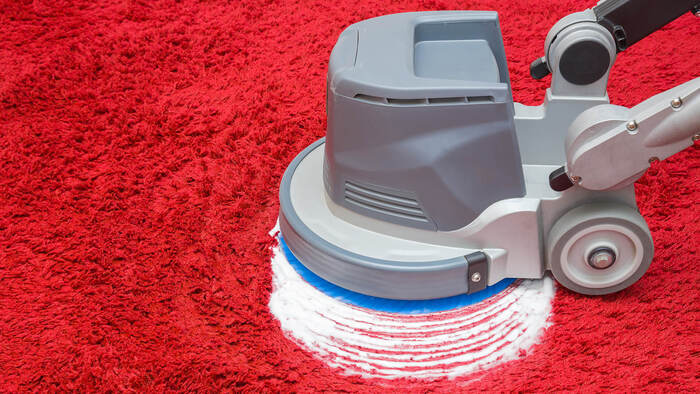One of the most important aspects of carpet ownership is maintaining them through regular cleaning. It doesn’t matter what type of carpet you own, or what it’s made from, all carpets will need professional cleaning to ensure they remain in a clean, presentable and hygienic condition for as long as possible.
That’s the easy part to understand. Deciding how a carpet should be cleaned is a bit more complicated, because there are a variety of different options available. Which one is best for your carpets, and what kind of results can you expect? A lot depends on what type of carpet you own, where it’s situated, how unclean it is, and how much you want to spend.
It’s essential to make sure the correct method of carpet cleaning is chosen for a particular type of fabric, as not all methods are compatible or suitable for all carpet materials.
Because of the complexity involved in knowing which is the best method of carpet cleaning to use, it’s always a good idea to seek out a professional carpet cleaning company, rather than attempting to clean a carpet yourself.
Let’s explore the different options available, what they involve, and any associated benefits and downsides.
1. Dry carpet cleaning
In a nutshell, carpets can either be cleaned using wet or dry methods.
As the name suggests, dry carpet cleaning doesn’t involve using any moisture to clean a carpet. Instead, a special type of powder is applied over the carpet which is designed to absorb any dust, stains and general dirt. A machine with a rotating brush is used to agitate and spread the powder to all areas of a carpet, where it’s left for a short while to ‘dwell’ or get to work. The powder, along with the dirt it has absorbed, will then be vacuumed away.
With no need to wet the carpet, this popular cleaning method doesn’t involve any drying so it’s a quick process. It’s suitable for those carpets that can’t be cleaned using wet processes, such as carpets made from seagrass, jute or sisal. It’s also an eco-friendly method as biodegradable powders can be used.
However, it’s worth bearing in mind that only the surface dirt will be removed when a carpet is dry cleaned, so it’s only usually a method that’s suitable for carpets that need a light clean. If your carpets are very stained or heavily soiled, this method won’t provide them with the full deep clean they might need.
2. Encapsulation cleaning
Encapsulation, also referred to as ‘encapping’, involves applying a type of preservative and detergent to a carpet which then surrounds or encapsulates the stains, dust and dirt, forming tiny crystals which can be easily removed.
The process first involves vacuuming the carpet, to remove any loose dry dirt. Next, the encapsulating agent is applied to the carpet, with the help of a machine with a special pad or brush to agitate the detergent into the carpet to help break the dirt down.
After the small crystals of dirt have formed and left to dry for a short while, they will be vacuumed up.
Although this type of cleaning method isn’t effective if a carpet needs deep-seated dirt and stubborn stains removed, it’s useful for light cleaning or for periods in-between deep cleaning appointments. It’s fast and affordable, making it a convenient option. It also doesn’t leave any residues behind.
If your carpets are especially prone to spills and stains, it might be worth considering getting stain protection for them, so that it’s easier to remove any spillages in-between deep cleans using a quick-fix cleaning method like encapsulation.
3. Shampooing
As the name suggests, carpet shampooing is an old-school method that involves combining water with a soap or detergent to create a frothy foam that cleans a carpet. As it would take a long time to do this by hand, in most cases a special machine is used to apply the shampoo and work it into the carpet, to trap any dirt. Once the soap has been left to dry, a carpet can be vacuumed to collect the dirt.
This tried-and-trusted method of cleaning can be effective on heavily soiled carpets, creating a bright and vibrant finish.
The biggest problem with carpet shampooing is that it’s hard to remove all of the soapy residues from the carpet. This means that the carpet can become dirty again quickly, as new dirt becomes attracted to the sticky residues. If you also have sensitive skin or allergies, the leftover residues might cause you health problems if certain chemicals have been used in the shampoo. It can also take a long time for the carpet to dry.
4. Bonnet cleaning
Bonnet cleaning involves using a machine which has a special pad or cloth attached to a rotating buffer. The pad or cloth is soaked in a wet foam or shampoo cleaning solution which picks up the dirt, debris and stains in a carpet through agitating it. The bonnet absorbs the dirt from the carpet, so it’s changed after each clean.
This method of cleaning is ideal if you want to give the surface of a carpet a quick clean or to spot clean certain areas. It’s quick, with a fast carpet drying time.
It’s not suitable if your carpets need deep cleaning, however, as it won’t be effective at picking up ingrained dirt and debris. Over time, deep-seated dirt may resurface in a carpet so you’ll still need to make sure your carpets are deep cleaned in-between bonnet cleaning.
5. Steam cleaning
If you’re looking for a really effective and reliable way to deep clean, sanitise and deodorise a carpet, steam cleaning is a popular choice. Steam carpet cleaning involves using a machine which utilises hot water and pressure to dissolve deep-seated dirt, persistent odours and tough stains from carpets.
The process typically involves vacuuming a carpet first, to extract any dry dirt present. If there are any stains or deep-seated dirt in the carpet, a cleaning solution is usually then applied to help break these down. To loosen and dislodge the dirt, a rotating machine or special type of brush may be used to agitate the carpet.
A machine is then used to spray hot water onto the carpet, and with its powerful vacuum system, the water, cleaning residues and the dirt in the carpet are then extracted by the steam cleaning machine.
With the best machines on the market, steam carpet cleaning can eradicate up to 98% of carpet dirt, allergens and bacteria. Because most of the residues are also removed during the steam cleaning process, this method is child- and pet-friendly, and safe for your carpets. It’s also a natural, eco-friendly way to clean a carpet, without the use of any harmful chemicals.
Wetting a carpet will, obviously, mean it will need to dry, so it’s a longer process compared to dry cleaning. However, modern steam cleaning machines are really effective at removing most of the cleaning moisture, so carpets can dry quickly. Special hot air dryers can also be used to shorten the drying time.
Importantly, getting your carpets deep cleaned is essential to remove harmful allergens that could affect your health, while also protecting and preserving a carpet, and even prolonging its lifespan.
Not all carpet materials can be steam cleaned, so it’s a good idea to use a professional carpet cleaning company who will know which carpet fabrics can and can’t be steam cleaned. Where carpets are suitable for steam cleaning, this is the preferred method that carpet manufacturers recommend.
6. Is steam cleaning the same as hot water extraction?
Steam carpet cleaning and hot water extraction may appear to be the same thing, but there are subtle differences between these methods. The main difference is the temperature applied. Steam cleaning requires a hotter temperature than hot water extraction, as the water needs to be hot enough to transform into vapour.
Steam carpet cleaning mainly relies on the heat from the steam to deep clean a carpet, without normally needing any chemicals, whereas hot water extraction usually requires a cleaning solution to remove the dirt from a carpet.
When your carpets need cleaning, speak to the experts at Carpet Bright UK who will talk you through all of the different options available for your carpets.







